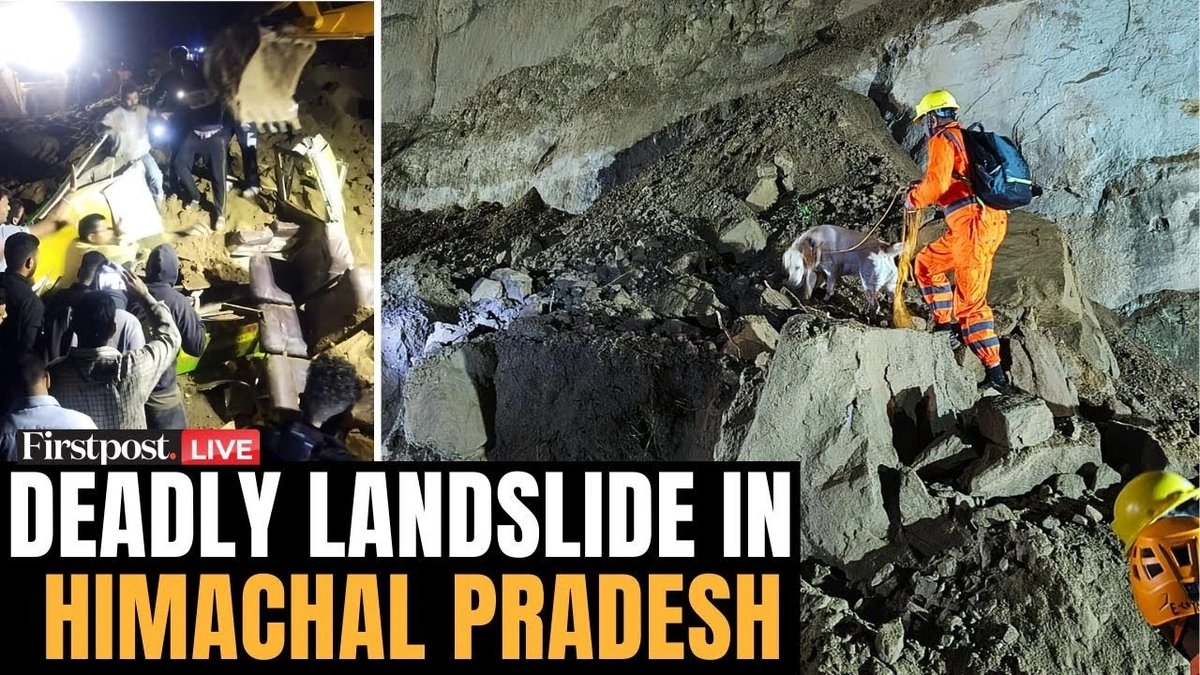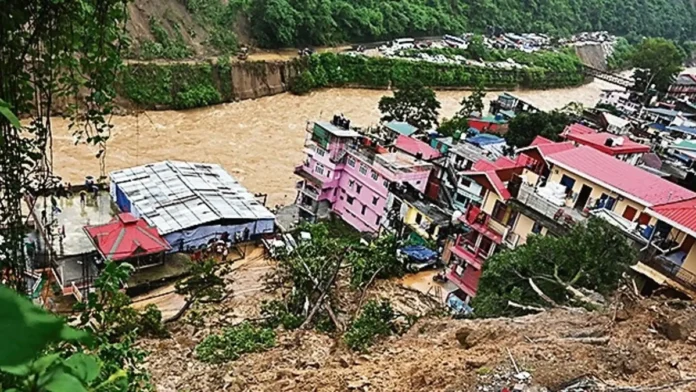The news hit like a punch to the gut. A Himachal landslide in Bilaspur, a bus caught in its destructive path, and the terrifying uncertainty of how many lives are at stake. It’s easy to get lost in the headlines, the casualty counts, the immediate devastation. But, let’s be honest, what we really want to know is why? Why does this keep happening? And, perhaps more importantly, what can actually be done about it?
Understanding the Rising Risk of Landslides in Himachal

Here’s the thing: Himachal Pradesh, with its breathtaking beauty and fragile ecosystem, is increasingly vulnerable to these disasters. It’s not just a case of ‘bad luck’ or ‘natural disaster’ – although, of course, the forces of nature are undeniably powerful. The real story is far more complex. A significant factor contributing to the increased landslide incidents is unplanned development . Roads are being carved into hillsides without proper geological assessments, hotels are popping up on unstable slopes, and the very earth is being reshaped at an alarming rate. Add to this the impact of climate change – erratic rainfall patterns, more intense cloudbursts – and you have a recipe for disaster. According to recent studies from the Wadia Institute of Himalayan Geology, the frequency of extreme rainfall events has increased by over 50% in the last two decades.
The Human Cost | Beyond the Headlines
We see the numbers – ‘many feared trapped’ – but behind those numbers are families, dreams, and lives irrevocably altered. Imagine being on that bus, the ground suddenly giving way, the world turning upside down. The fear, the chaos, the desperate hope for rescue. It’s gut-wrenching. And while rescue operations are underway, often hampered by difficult terrain and inclement weather, the long-term impact on the affected communities is immense. Loss of homes, livelihoods, and loved ones leaves deep scars. What fascinates me is how quickly these events fade from national attention. The news cycle moves on, but the people of Bilaspur, and countless other regions facing similar threats, are left to rebuild their lives, often with inadequate support. This is where long-term solutions and sustainable development become crucial.
Sustainable Solutions | A Path Forward
So, what can be done? It’s not as simple as just stopping all development. Himachal’s economy relies heavily on tourism and infrastructure projects. The key is sustainable development – development that takes into account the geological realities of the region and prioritizes environmental protection. This includes:
- Stricter regulations for construction on vulnerable slopes
- Investing in early warning systems and disaster preparedness
- Promoting eco-tourism practices that minimize environmental impact
- Implementing comprehensive land-use planning that factors in landslide risk
- Reforestation efforts to stabilize hillsides and reduce erosion
These measures require a coordinated effort from the government, local communities, and experts in geology and disaster management. One promising approach is the use of geo-hazard mapping , which identifies areas prone to landslides and guides development away from high-risk zones. These maps, combined with real-time monitoring of soil moisture and ground movement, can provide valuable early warnings and help prevent future tragedies. And, let’s be honest, the time for half-measures is long gone. The scale of the problem demands bold action and a fundamental shift in how we approach development in fragile mountain ecosystems. This is not just about saving lives; it’s about preserving the very soul of Himachal Pradesh .
The Role of Technology in Disaster Mitigation
What fascinates me is the potential of technology to help mitigate the impact of these disasters. Imagine drones equipped with thermal imaging cameras searching for survivors in the aftermath of a landslide. Or AI-powered systems analyzing satellite data to identify areas at high risk of slope failure. We’re already seeing some of these technologies being deployed in other parts of the world, and there’s no reason why they can’t be adapted for use in Himachal Pradesh. Furthermore, the integration of real-time weather data with geological information can provide highly accurate predictions of landslide susceptibility , allowing for timely evacuations and resource mobilization. The use of sensors embedded in hillsides to monitor soil moisture and ground movement can also provide early warnings of impending landslides.
But technology alone isn’t enough. It needs to be coupled with community-based disaster preparedness programs that empower local residents to take proactive measures to protect themselves. This includes training in first aid, search and rescue techniques, and evacuation procedures. It also involves raising awareness about the risks of landslides and promoting responsible land-use practices. And, speaking of community involvement,what about indigenous knowledge? Local communities often have a deep understanding of the terrain and can provide valuable insights into landslide patterns and vulnerabilities. Their knowledge should be integrated into disaster management plans and used to inform decision-making.
Himachal Landslide | The Blame Game vs. Accountability
It’s tempting to point fingers and assign blame after a tragedy like this. Was it the government’s fault for allowing unchecked development? Was it the contractors’ fault for cutting corners? Was it simply an act of God? But the truth is, there’s no single culprit. Landslides are complex events with multiple contributing factors. What’s more important than assigning blame is establishing accountability. Holding those responsible for reckless development practices accountable for their actions. Ensuring that regulations are enforced and that environmental safeguards are respected. Promoting transparency in decision-making and empowering local communities to participate in the planning process. A common mistake I see is governments promising compensation after the tragedy. But, what about investment in prevention? What about soil erosion prevention? What about funding for proper audits?
Conclusion
The deadly landslide in Bilaspur is a stark reminder of the fragility of life and the increasing vulnerability of mountain ecosystems. It’s a call to action – a call for sustainable development, responsible governance, and a deep respect for the forces of nature. But beyond the immediate crisis, it’s also an opportunity to learn, to adapt, and to build a more resilient future for Himachal Pradesh. And, perhaps more importantly, to remember that behind every statistic is a human story, a life that matters. Let’s honor those lives by working together to prevent future tragedies and create a more sustainable world for all.
FAQ
What causes landslides in Himachal Pradesh?
Landslides in Himachal Pradesh are primarily caused by a combination of factors including heavy rainfall, unplanned construction, deforestation, and seismic activity. Climate change is exacerbating the problem by increasing the frequency and intensity of extreme weather events.
How can I stay safe during a landslide?
If you live in a landslide-prone area, stay informed about weather forecasts and warnings. If you notice signs of a potential landslide, such as cracks in the ground or unusual water flow, evacuate immediately. Listen to local authorities and follow their instructions.
What is the government doing to prevent landslides?
The government is taking steps to mitigate landslide risk, including investing in early warning systems, implementing stricter construction regulations, promoting reforestation efforts, and conducting geo-hazard mapping to identify vulnerable areas.
How can I help support landslide relief efforts?
You can support landslide relief efforts by donating to reputable organizations that are providing assistance to affected communities. You can also volunteer your time and skills to help with recovery efforts.
What is terrain stability and how it affects landslides?
Terrain stability is the ability of land to resist landslides. Loss of vegetation, steep slopes and heavy rainfall can affect terrain stability negatively and lead to hillside collapse.
What are the steps to take if I observe signs of slope instability?
Immediately report any signs of slope instability, such as cracks or bulges in the ground, to local authorities. Evacuate the area if instructed to do so, and avoid building structures on unstable slopes.

